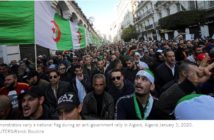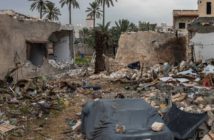Eurasia Review
A market scene in Yemen
By INEGMA — (April 8, 2013)
By Sabahat Khan
The Arab Spring represents a series of uprisings which had less in common with each other than its broad-brush characterization suggested and each uprising in its own way pointed to future crises born out of tribal, sectarian, or ideological rivalries. It is now apparent that the Arab Spring set off a complex milieu of prolonged crises with political process, legitimacy, and ultimately state authority itself, unraveling at their own pace inside their distinctive national contexts. A lasting impact of these transformations will be the creation of new linkages between state and non-state actors inside a region that may just be embarking on rather than seeing off the most radical period of change since the dissolution of the Ottoman Empire.
The Arab Spring – Leaderless and Directionless
Debates surrounding the Arab Spring, its causes and implications have raged for as long as the political transformations it supposedly refers to themselves. For some, the Arab Spring was an Islamic awakening – for others, a new era had dawned with an empowered youth and middle class emancipated from the ills of unaccountable government. Internationally, one group of states welcomed the Arab Spring as an opportunity while others saw in it a spiraling crisis destabilizing an entire region – by design, even. Few though questioned the correctness of the broad-brush term of Arab Spring, which conveniently sought to explain a series of complex political upheavals across a region monolithically. Aside from their general timing, each upheaval was a separate story and inertly different from political developments occurring anywhere else. Still, the temptation to explain a pan-regional geopolitical transformation through an overarching explanation and a single point of reference over-rode the far more challenging alternative of developing a more nuanced and intrinsic understanding to each development within their distinctive socio-political contexts.
The most damaging result of those impulses was to fall into the trap of believing that the trajectories of each country affected by the Arab Spring flowed in the same direction – a direction that had been pre-determined as being positive for all. However, as ruling regimes were overthrown, each uprising fragmented into the myriad of socio-political forces that comprised them – each with its own identity, narrative, and aspirations to fill the political vacuum they had engineered. Amidst the frenzy of political changes occurring, the long-term ramifications of the tribal, sectarian, and ideological ruptures rapidly being brought into play drew less attention than was warranted. As a non-homogenous spectrum of political forces and tastes congregated under a temporary cause, the gaping absence of a unified leadership, refined political agenda, or future roadmap to address national challenges pointed to future crises in political process, legitimacy and, ultimately, with state authority itself. Those crises have now emerged into the foreground and are set to impact the role and viability of the nation-state around the region in no uncertain terms.
Prolonged Crises in Political Process, Legitimacy, and State Authority
Reformists and traditionalists were quickly overshadowed in street and voting power by Islamists in Tunisia and Egypt. With credibility among their own supporters the priority, ideological loyalties repeatedly trumped considerations on building broader political consensus for the new Islamist governments. The mantra of political engagement had limited impact, but also carried limited risks in the context of domestic realpolitik where the focus was placed firmly on enacting constitutional amendments and a state-wide consolidation of power by Islamists. Alienated political opponents began to reject the political process itself that brought and would now sustain Islamists in office. As the Muslim Brotherhood sought to regenerate a relapsing system based on their own ideological convictions, with limited constitutional alternatives available to them the opposition adopted a strategy of confrontation –still hoping to trigger a military coup d’état by creating civil unrest and government paralysis. The opposition strategy is however shortsighted as Islamists could begin reacting to assaults on their mandate with less restraint, and because any military intervention would be both reluctant and unable to sustain for long.
Consider also Libya and Yemen, which, despite their starkly different demographic challenges and the ownership of exportable natural resources, face two important challenges to national cohesion in the form of inter-tribal rivalries and Islamist militias. In Libya as in Yemen, national institutions are undergoing an unrelenting erosion of their legitimacy as they become politicized and the focus of zero sum tribal competition. The lack of political process and the continued de-legitimization of state institutions in Libya and Yemen is creating new vacuums that will consolidate rather than weaken the influence of actors which present hurdles for successful nation rebuilding. For example, Al Qaeda affiliates and sympathizers, having gained a grassroots foothold in urban as well as outlying pockets, are being now coopted rather than challenged by mainstream political forces in their own push for power in both Libya and Yemen. Moreover, militias have already outgrown the ability of the state to restrain let alone disarm them, and their growing influence is paving the way for parallel structures of authority to be built alongside traditional state ones.
Elsewhere, sectarian schisms are exerting other powerful effects on the state. Syria represents a complex political crisis especially due to its significance in the regional balance of power. Even leaving aside the impact of the Syrian crisis on popular perceptions from within, the role of external forces in the crisis has offset the creation of new political vacuums by either displacing state institutions with alternative mechanisms, or their legitimacy. As the assigning of authority is delimited from a traditional political process-based framework and placed inside an internationalized paradigm of strategic balancing and patronage, the notion of the state is being affected at its roots in Syria as parallel governance structures emerge around increasingly degenerated traditional ones. In stark contrast, Iranian interference has triggered the deployment of the Peninsula Shield Force for the first time in its history in Bahrain. The activation of the Peninsula Shield Force and the subsequent announcement that Bahrain will host the Unified GCC Military Command represent watershed moments for the GCC as it reacts to instability around its periphery and interference with movement towards a model reminiscent of the European Common Security and Defence Policy (CSDP).
Conclusion – Transitioning Towards a New Paradigm of Power
Post-Arab Spring, although the de-legitimization of state institutions and traditional structures of government may be reversible, the urgency and scale of effort required is rapidly putting those possibilities beyond reach. Opportunities will continue to be produced for new categories of political actors and governance structures drawing on support from external patrons and sympathizers to emerge alongside traditional ones. Existing challenges will be exacerbated further by the economic decay that follows breakdowns of political process and effective governance, providing still more opportunities for non-state actors to strengthen. The inability of Islamist governments to deliver on popular expectations particularly economic relief and an assumed inclination of Western powers towards secular rivals will not however cap the resurgence of political Islam. The uprisings of the Arab Spring were not driven by any religious calling so any characterization of them as Islamic is misleading – nevertheless, the emerging and future political landscape will continue to favor political Islam for reasons discussed, and the secular narrative of Arab nationalism will subside as an Islamist one takes its place.
Had they not occurred near-simultaneously and contagiously across such large populations, each individual crisis would have been more easily absorbed into the geopolitical status quo. For now, the regional status quo has survived but political instability and deepening crises with political process, legitimacy and state authority suggests the greatest challenges to political and regional security lie ahead. In hedging their bets, states will increasingly supplement traditional diplomacy with political engagement at sub-state levels– further weakening traditional state structures, but also creating unprecedented levels of influence for state actors among non-state actors and vice versa. Ideology will be decisive particularly for non-state actors whose survival is tied strongly to political narratives at the grassroots, but a multi-polar region will ensure a competitive marketplace for tactical political bargaining and deal making. This growing transnational interplay of political forces at state and sub-state levels has already begun to concretize a new multi-layered paradigm of influence, power, and even authority.
Sabahat Khan, Senior Analyst, INEGMA
.






